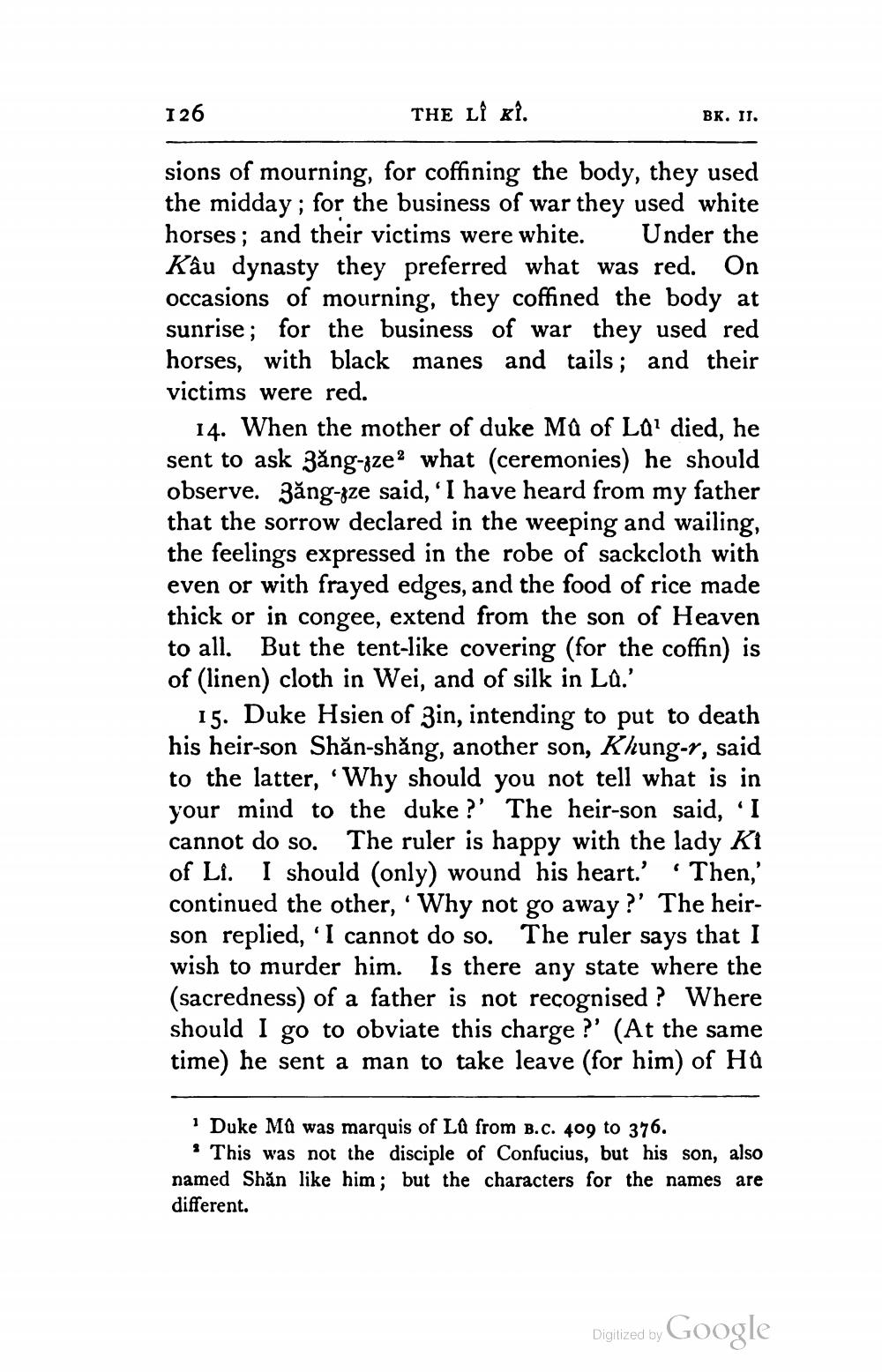________________
126
THE LÎ xi.
BK. II.
sions of mourning, for coffining the body, they used the midday; for the business of war they used white horses; and their victims were white. Under the Kâu dynasty they preferred what was red. On occasions of mourning, they coffined the body at sunrise; for the business of war they used red horses, with black manes and tails; and their victims were red.
14. When the mother of duke Mû of La’ died, he sent to ask 3ăng-gze? what (ceremonies) he should observe. Zăng-gze said, 'I have heard from my father that the sorrow declared in the weeping and wailing, the feelings expressed in the robe of sackcloth with even or with frayed edges, and the food of rice made thick or in congee, extend from the son of Heaven to all. But the tent-like covering (for the coffin) is of (linen) cloth in Wei, and of silk in Lù.'
15. Duke Hsien of Zin, intending to put to death his heir-son Shăn-shăng, another son, Khung-r, said to the latter, Why should you not tell what is in your mind to the duke ?' The heir-son said, I cannot do so. The ruler is happy with the lady Ki of Li. I should (only) wound his heart.' Then,' continued the other, Why not go away?' The heirson replied, 'I cannot do so. The ruler says that I wish to murder him. Is there any state where the (sacredness) of a father is not recognised? Where should I go to obviate this charge ?' (At the same time) he sent a man to take leave (for him) of Hù
· Duke MÀ was marquis of Lû from B.C. 409 to 376.
* This was not the disciple of Confucius, but his son, also named Shăn like him; but the characters for the names are different.
Digitized by Google




